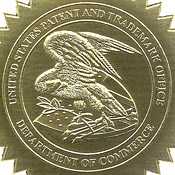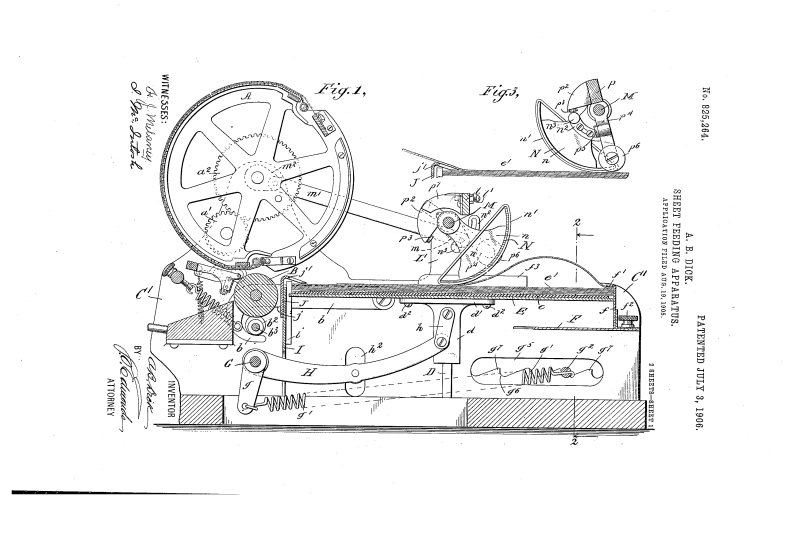Search Results for: 높은 적중율을 자랑하는 NCP-CI-Azure 100%시험패스 덤프 덤프는 Nutanix Certified Professional - Cloud Integration - Azure (NCP-CI-Azure v6.7) 시험패스의 조건 💙 《 www.itdumpskr.com 》의 무료 다운로드➤ NCP-CI-Azure ⮘페이지가 지금 열립니다NCP-CI-Azure시험덤프공부
Patently-O Bits and Bytes No. 53
PTO Press Release: Deputy Peterlin Leaving PTO
Reigniting the Engine of Growth with the Sparkplug of Invention
False Marking
Ex Parte Bilski: On the Briefs:
Oakley’s Sunglasses and Design Patents
Board of Patent Appeals and Interferences (BPAI)
Patently-O Bits and Bytes No. 6.
Patently-O Bits and Bytes
Ten Ways to Spend Your Bonus: Holiday Gifts for a Patent Attorney
Ineligible Subject Matter: 35 USC 101 Finds its Teeth (Biting into Nonobviousness)
Continuation Rules to Issue August 21
OMB approves proposed changes to continuation practice.
Women as Patentees
Evidence Based Prosecution: Non-Patent Prior Art Leads to Rejections
All Inventors are Human; All Humans are Inventors
Patently-O Bits and Bytes No. 100
- PTO Director: Commerce Secretary Locke has been confirmed as Commerce Secretary. Congratulations. With patent attorney blinders - the next step is to solidify the PTO leadership positions. Leading candidates include Todd Dickinson and David Kappos (IBM). Dickinson is an old-guard Clinton supporter. Kappos was an Obama donor.
- Drop in Filing?: I recently relayed an apparent quote from the PTO General Counsel James Toupin reporting a 16% decrease in new patent filings. Toupin and the PTO have since rejected that number as a large overstatement and have indicated that they will provide better numbers shortly. The bottom line is still true - the PTO is experiencing a cash-shortfall and is cutting its own budget wherever it can.
- Fee Increases: Dramatically shifting its position, the IPO has announced that it opposes "any significant increase in USPTO patent fees in the near term."
- IP Primer: The Dickstein Shapiro firm has released a new version of its IP Primer (free, but you have to give a name).
- Patent Reform 2009: The Senate Judiciary Committee holds the ball on patent reform and is set to meet again to discuss mark-ups on March 31, 2009. Lobbying will be heavy during the next week to define the center "consensus" ground. Quinn; IPWatch.
The Legacy of A.B. Dick and Motion Picture Patents: How these 100+ Year Old Ruling Reshaped Patent Law
USPTO Discontinues Accelerated Examination Program for Utility Applications (Design Patent Rocket Docket is also Suspended)
by Dennis Crouch
The USPTO is discontinuing its Accelerated Examination program on July 10, 2025. The program has received fewer than 100 petitions in recent years, compared with 10,000+ Track One prioritized examination requests. The USPTO anticipates further raising the annual limit on Track One requests in 2025. The USPTO also recently terminated the Climate Change Mitigation Pilot Program on January 28, 2025. See Discontinuation of the Accelerated Examination Program for Utility Applications, 90 Fed. Reg. 24324 (June 10, 2025).
The Accelerated Examination program allowed applicants to advance their applications out of turn by filing a petition to make special along with a pre-examination search and examination support document. The program was designed to provide expedited examination for applicants willing to invest significant effort in preparing detailed examination support materials, including prior art searches and claim charts mapping the prior art to each pending claim. However, the program’s popularity plummeted following the introduction of Track One prioritized examination in 2011. Unlike Accelerated Examination, Track One requires only payment of a fee—currently $4,200 for large entities—without the burden of preparing examination support documents or conducting pre-examination searches. (more…)
 Margaret Peterlin has announced that she will be leaving the PTO in August. She has sparked resistance from the patent community ever since her appointment as deputy director of the USPTO in May 2007. She is considered an expert at legislative tactics at a time when the PTO was asking for legislation opposed by many patent practitioners. In late 2007, a DC District dismissed a lawsuit against the USPTO requesting that Peterlin be removed from office. The complaint alleged that she lacked the intellectual property law experience required by statute for her position. In many ways, the negative reaction to Peterlin was simply a reflection of frustrations felt by many patent practitioners. In an internal message to PTO employees, Director Jon Dudas indicated that Peterlin is also expecting her first child later this year. Congratulations and Good Luck!!
Margaret Peterlin has announced that she will be leaving the PTO in August. She has sparked resistance from the patent community ever since her appointment as deputy director of the USPTO in May 2007. She is considered an expert at legislative tactics at a time when the PTO was asking for legislation opposed by many patent practitioners. In late 2007, a DC District dismissed a lawsuit against the USPTO requesting that Peterlin be removed from office. The complaint alleged that she lacked the intellectual property law experience required by statute for her position. In many ways, the negative reaction to Peterlin was simply a reflection of frustrations felt by many patent practitioners. In an internal message to PTO employees, Director Jon Dudas indicated that Peterlin is also expecting her first child later this year. Congratulations and Good Luck!! 
